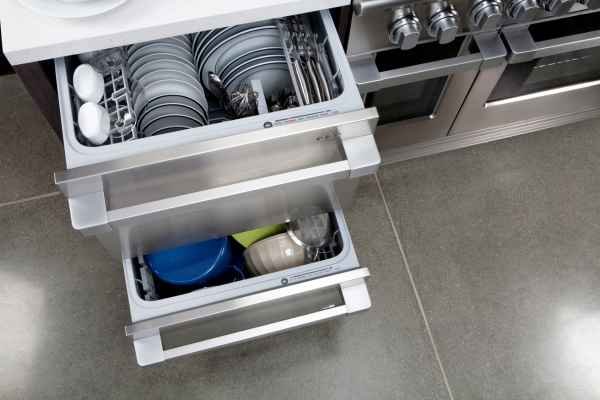When purchasing a brand new equipment, specially a large one like a dishwasher, weight is an crucial aspect that is often unnoticed. The Average Dishwasher Weigh can have an effect on the entirety from shipping prices and installation ease to ground assist and placement flexibility. Whether you’re transforming your kitchen or upgrading an vintage unit, knowing how a whole lot a dishwasher typically weighs allows you make informed choices, in particular if you plan to move it your self or install it on an higher floor.
Understanding Why Dishwasher Weight Matters
The weight of a dishwasher plays a key role in transportation, set up, and every day use. A heavier dishwasher might also indicate more long lasting materials and better sound insulation, but it also method greater effort to move and set up. Additionally, for certain kitchens—specially the ones in older homes or flats—ground aid would possibly want to be taken into consideration. Also, in case you’re hiring movers or installers, weight should affect carrier fees. Understanding a dishwasher’s weight can also help in figuring out between a built-in or portable version primarily based on your kitchen layout and way of life.
Typical Weight Range for Standard Dishwashers
Most wellknown integrated dishwashers fall within a weight variety of fifty to a hundred twenty five pounds (approximately 23 to 57 kilograms). The version in weight depends at the logo, material, insulation degree, and extra functions. Models with stainless-steel tubs and advanced drying or filtration systems have a tendency to be at the heavier aspect. Conversely, simple fashions with plastic tubs or fewer features may weigh much less. This weight variety gives a preferred concept of what to anticipate while choosing a vast residential dishwasher.
How Much Does the Average Dishwasher Weigh? (By Size and Style)
The average weight of a standard 24-inch built-in dishwasher is around 77 to 90 pounds (35 to 41 kilograms). Slimline dishwashers, which are typically 18 inches wide, average between 40 and 70 pounds, depending on the manufacturer. On the other end of the spectrum, commercial or extra-large capacity dishwashers can weigh well over 150 pounds due to their larger frames and industrial components. Style and configuration significantly influence the total weight—especially when considering whether a unit includes built-in water softeners or heavy-duty stainless steel parts.
Freestanding vs. Built-in Dishwashers – What’s the Weight Difference?
Freestanding dishwashers are generally similar in weight to built-in models, averaging around 90 to 100 pounds. However, they might weigh slightly more because of their full exterior casing, which offers structural support and aesthetic finish from all sides. Built-in dishwashers, designed to be installed under countertops, often omit the full back and side panels, which reduces weight slightly. Despite this, built-ins may incorporate denser materials for sound insulation and water retention, balancing out the weight difference in many cases.
Portable Dishwashers: Lightweight Options That Pack a Punch
Portable dishwashers are designed for convenience, and that includes being lighter than their built-in counterparts. On average, a portable dishwasher weighs between 45 and 70 pounds, making it manageable for one or two people to move. These models are perfect for renters or small kitchens without dedicated dishwasher spaces. Despite their lighter weight, many portable units still offer competitive cleaning performance and capacity, making them an attractive choice for users who need flexibility without compromising functionality.
Compact and Slimline Dishwashers – Small Size, Surprising Stats
Compact and slimline dishwashers may be smaller in size, but they can still be surprisingly weighty depending on the build quality and features. A slimline dishwasher (18 inches wide) usually weighs between 40 and 70 pounds, while countertop models may weigh as little as 25 to 35 pounds. These appliances are ideal for apartments, RVs, or secondary kitchens, where space is limited but the need for convenience remains. Their lighter weight makes them easy to install and relocate, although they often sacrifice some capacity and functionality compared to standard models.
Commercial Dishwashers: Heavier Machines Built for Bigger Jobs
Commercial dishwashers are in a category of their own when it comes to weight. Designed for high-capacity cleaning in restaurants, hotels, and institutions, these machines can weigh anywhere from 150 to 300 pounds or more. They are constructed with heavy-duty components to withstand frequent use and are often integrated into stainless steel kitchen setups. Their substantial weight reflects both their durability and their enhanced performance capabilities. As such, commercial dishwashers typically require professional installation and are not suited for residential use.
Weight by Type of Dishwasher
Countertop Dishwashers

Countertop dishwashers are the lightest and most compact type available. They typically weigh between 25 to 45 pounds (11 to 20 kg). These units are designed to sit on a counter and connect to a kitchen faucet. Because they don’t have large motors or complex internal systems, they remain lightweight and are ideal for small kitchens, RVs, or studio apartments.
Built-in Dishwashers

Built-in dishwashers are the most common type for modern homes and generally weigh between 60 to 100 pounds (27 to 45 kg). These are installed under countertops and are more permanent. The added weight often comes from larger capacity, stainless steel tubs, and internal insulation designed to reduce noise.
Portable Dishwashers

Portable dishwashers are slightly heavier than countertop versions but lighter than built-in models. They usually weigh around 50 to 80 pounds (23 to 36 kg). These dishwashers are freestanding, come on wheels, and can be stored away when not in use. Despite their mobility, their size and capability make them a powerful alternative for people without space for built-in units.
Drawer Dishwashers

Drawer dishwashers come in single or double drawer designs and weigh around 60 to 120 pounds (27 to 54 kg) depending on the configuration. These units are installed in cabinets like built-ins but open like drawers. The double-drawer versions naturally weigh more due to dual systems housed in one frame.
Integrated Dishwashers

Integrated dishwashers are built-in units that are fully enclosed behind cabinet panels for a seamless look. Their weight can range from 70 to 110 pounds (32 to 50 kg) depending on the panel material and internal features. Because the front door is often made of the same wood as kitchen cabinets, it adds extra pounds.
What’s Inside a Dishwasher That Adds to the Weight?
Several internal components contribute to a dishwasher’s weight. Stainless steel tubs, water pumps, heating elements, and insulation materials add significant heft. Higher-end models often include advanced filtration systems and heavy-duty motors, which weigh more than basic models. The more features a dishwasher has—like soil sensors, extra spray arms, or drying systems—the more it typically weighs.
Weight Differences Between Older and Newer Dishwasher Models
Older dishwasher models tend to be heavier due to the use of heavier metals and less efficient designs. Many newer dishwashers use lightweight composite materials and improved engineering, making them easier to install and more energy-efficient without sacrificing performance. In general, modern dishwashers may weigh 5–15 pounds less than comparable older models.
How the Weight of a Dishwasher Affects Installation
The heavier the dishwasher, the more effort and planning needed for installation. Heavier models may require two people to install safely, especially if stairs are involved. Additionally, the floor structure must be considered—particularly in older homes—when installing very heavy dishwashers. More weight also means it’s harder to maneuver the unit into tight spaces.
Can One Person Lift a Dishwasher Alone?
While lighter fashions like countertop or small transportable dishwashers may be lifted via one character, fashionable or built-in dishwashers generally require two human beings. A 70 to ninety-pound dishwasher is bulky due to its size, now not simply its weight. Attempting to lift or installation the sort of unit alone may be risky and isn’t advocated with out right gadget.
Tips for Moving and Transporting a Dishwasher Safely
When transferring a dishwasher, always disconnect electricity and plumbing first. Drain any remaining water and steady hoses in the unit. Use a dolly or hand truck for transport, and by no means lay the unit on its side if it contains fluids or fragile additives. Wrap it in protective padding and steady it during transit to prevent damage. Having a 2nd individual to help makes the method safer and greater efficient.
Why Weight Plays a Role in Energy Efficiency and Performance
Interestingly, a dishwasher’s weight can effect its performance and energy use. Heavier dishwashers often characteristic higher insulation, which reduces noise and helps maintain warmness at some stage in the wash cycle—main to stepped forward strength efficiency. Heavier substances, which includes chrome steel, additionally keep warmness better than plastic, this means that less power is required for drying.
What Materials Make a Dishwasher Heavier or Lighter?
Stainless steel interiors, thick insulation, and metal door panels increase the weight of a dishwasher, but also enhance durability and performance. On the other hand, plastic tubs, lighter doors, and minimal insulation reduce the weight but may sacrifice noise reduction and long-term durability. When choosing a dishwasher, balance weight with build quality to find a model that suits your needs.
Step-by-Step Guide: How to Weigh a Dishwasher
Weighing a dishwashers might seem like a challenge, but it’s relatively simple if you follow the right steps. Whether you’re checking the weight for moving, installing, or comparing models, having an accurate number can be very useful.
Tools You’ll Need
To weigh a dishwasher manually, you’ll need a heavy-duty scale capable of handling weights over 100 pounds. You may also need a measuring tape, a dolly or hand truck, and an assistant if the unit is heavy. Make sure the scale has a flat, wide platform so the dishwasher can sit evenly on top.
Finding Manufacturer Specifications
Before attempting to weigh a dishwashers yourself, it’s always smart to check the manufacturer’s specifications. These can usually be found in the user manual, on the product label (often on the inside of the door), or on the manufacturer’s website. This method is quick and reliable, especially if the dishwasher hasn’t been removed from its packaging yet.
Manually Weighing a Unit
If no specifications are available, you can manually weigh the dishwashers. First, carefully place it on the scale using a dolly if needed. Ensure the unit is dry and empty. If the dishwasher is too large for the scale, weigh one side at a time and add the two weights together, though this method is less accurate. Always take proper precautions to avoid injury when lifting or moving a heavy appliance.
How Dishwasher Weight Impacts Shipping and Delivery Costs
Dishwasher weight plays a direct role in shipping fees and delivery logistics. Heavier units generally cost more to ship and may require extra handling charges. Delivery teams might charge additional fees for installations involving stairs or narrow spaces. Knowing a dishwasher’s weight beforehand can help you budget for the full cost of acquiring and installing the appliance.
Things to Consider When Buying a Dishwasher Based on Weight
Weight isn’t just about shipping—it can affect installation ease, kitchen design, and even appliance longevity. Lighter models are easier to move and install but may lack the insulation or sturdiness of heavier versions. Consider how often you’ll move the appliance, the strength of your kitchen flooring, and whether you need features that may add weight, such as a stainless-steel tub or extra insulation.
Is a Heavier Dishwasher Better? Pros and Cons Explained
Heavier dishwashers often have better build quality, enhanced insulation for quieter operation, and more durable materials. However, they can be more difficult to install, cost more to ship, and may not be suitable for upper-floor kitchens without structural support. Lighter models are more portable and easier to handle but may feel less sturdy and have higher noise levels.
How to Choose the Right Dishwasher Weight for Your Kitchen
Choosing the right dishwasher involves balancing your kitchen’s needs with the unit’s specifications. For tight spaces or mobile homes, compact or countertop dishwashers under 50 pounds are ideal. For standard kitchens, a mid-weight built-in dishwasher around 70 to 90 pounds offers a good mix of performance and durability. If noise reduction and premium features are important, a heavier unit may be worth the tradeoff.
Fun Facts About Dishwasher Weight You Might Not Know
- The first dishwashers invented in the 1800s weighed over 200 pounds and were hand-cranked.
- Some commercial dishwashers weigh as much as a motorcycle—over 300 pounds.
- Adding a wooden front panel to match cabinetry can increase a dishwasher’s weight by 5 to 10 pounds.
- Modern dishwashers are becoming lighter thanks to advanced materials like composite plastics and lightweight motors.
Final Thoughts
So, how much does the average dishwasher weigh? The answer depends on the type, materials, and features, but most residential units fall between 50 and 100 pounds. Whether you’re installing it yourself or hiring help, understanding dishwasher weight can help you avoid surprises, ensure a smooth setup, and choose the model that best fits your home. Take weight into account not just as a number—but as a factor that influences function, efficiency, and ease of use.
